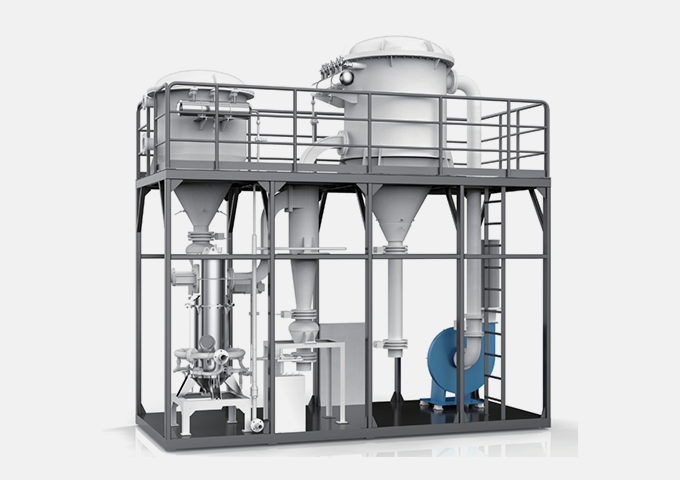
The history of pneumatic conveying technology dates back to the late 19th and early 20th centuries. With the advancement of industrialization and the growing demand for efficient material transportation, this technology has gradually evolved and found widespread application. Below are the major stages in the development of pneumatic conveying technology:
1. Initial Stage (Late 19th Century–Early 20th Century)
The origins of pneumatic conveying technology can be traced to the late 19th century, primarily for transporting lightweight materials such as grains and flour.
Early pneumatic conveying systems relied on simple fans and pipelines, using airflow to move materials from one location to another.
At this stage, the technology was relatively rudimentary, characterized by short conveying distances and low efficiency. Its applications were mostly confined to the agricultural and food processing industries.
2. Industrial Application Stage (Early–Mid 20th Century)
During the early 20th century, as the Industrial Revolution progressed, pneumatic conveying technology expanded into other industries, including cement, chemical, and metallurgical sectors, for transporting powdered and granular materials.
Dilute-phase conveying technology became widely adopted during this period, utilizing high-speed airflow to suspend and transport materials.
By the mid-20th century, dense-phase conveying technology emerged, enabling the transportation of high-density materials at lower airflow velocities. This innovation reduced energy consumption and equipment wear.
The design and manufacturing of pneumatic conveying systems matured during this stage, resulting in significantly increased conveying distances and capacities.
3. Technology Optimization Stage (Mid–Late 20th Century)
As pneumatic conveying technology became more prevalent, researchers began focusing on improving the efficiency, reliability, and adaptability of these systems.
In the 1960s, theoretical advancements in fluid mechanics and particle dynamics provided a scientific foundation for system design, marking a major breakthrough.
Innovations such as rotary valves and silo pumps were introduced, enhancing the stability and versatility of pneumatic conveying systems.
Additionally, advancements in materials science improved the wear resistance and sealing performance of pipelines and equipment, further optimizing system performance.
4. Automation and Intelligence Stage (Late 20th Century–Early 21st Century)
By the late 20th century, pneumatic conveying systems began integrating with automation technologies, enabling automated control and real-time monitoring of the conveying process.
The adoption of computer-aided design allowed for precise system optimization, tailoring conveying parameters to material properties and process requirements.
Environmental concerns also drove the development of cleaner and more efficient systems, reducing dust emissions and energy consumption.
5. Intelligence and Green Development Stage (21st Century–Present)
In recent years, pneumatic conveying technology has advanced towards greater intelligence and sustainability.
The integration of Internet of Things (IoT) and artificial intelligence (AI) technologies has enabled real-time monitoring, fault prediction, and remote control, significantly improving system reliability and operational efficiency.
Energy-efficient and low-emission equipment has been widely adopted, while improved system designs with better sealing capabilities have minimized material loss and dust pollution.
Today, pneumatic conveying technology is extensively used across various industries, including food, pharmaceuticals, chemicals, and energy, making it an essential component of modern industrial production.
Pneumatic conveying technology has evolved from its simple beginnings into today’s sophisticated, intelligent, and environmentally friendly systems. Through continuous innovation and adaptation to changing industrial needs, this technology will undoubtedly continue to advance, offering more efficient and sustainable solutions for industrial production in the future.
 |  |
